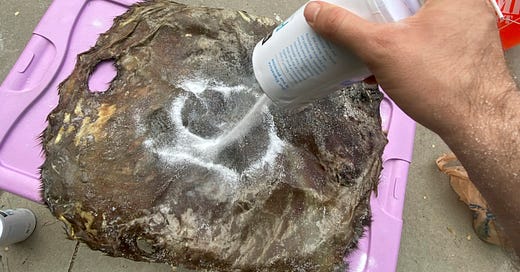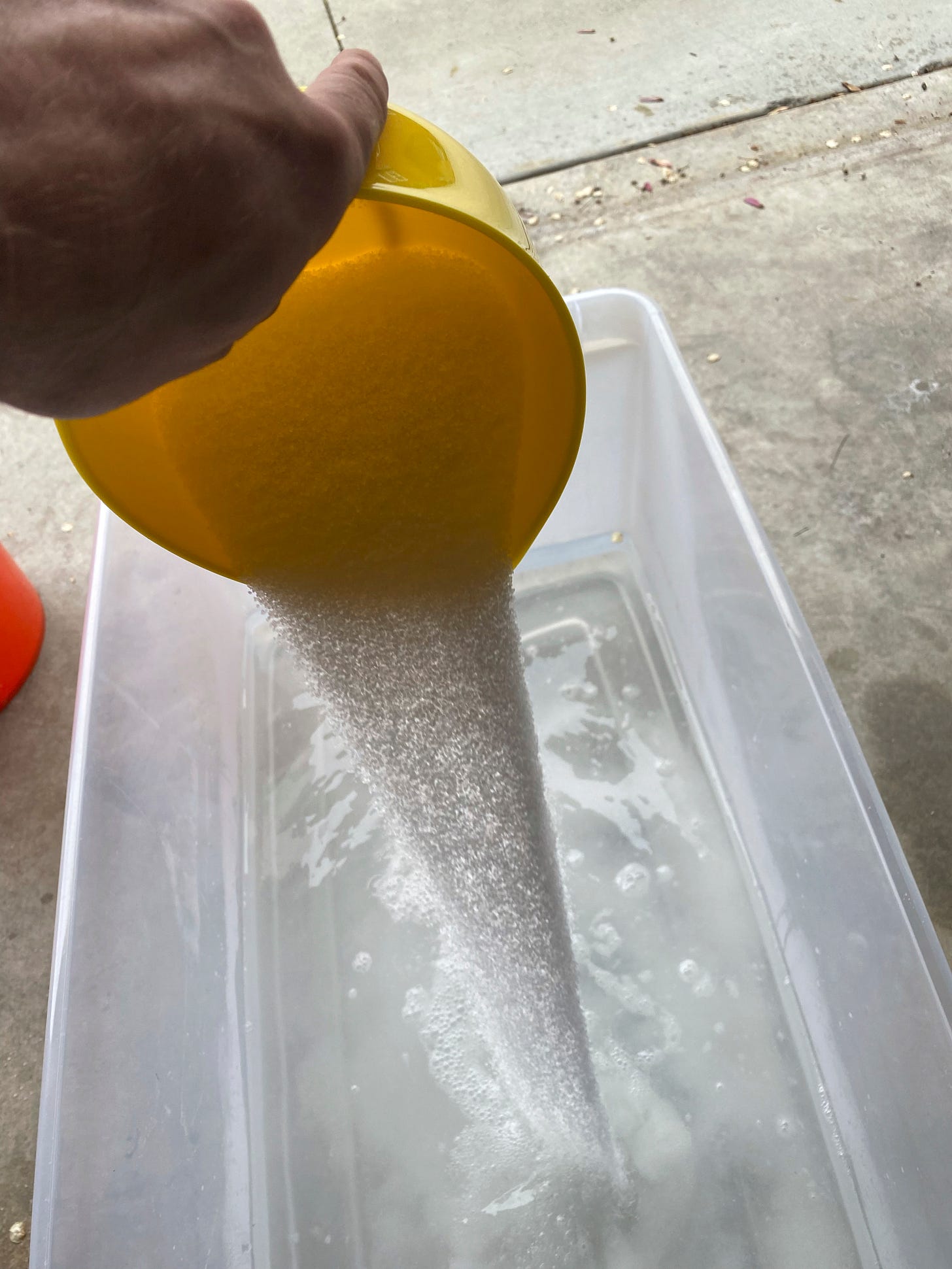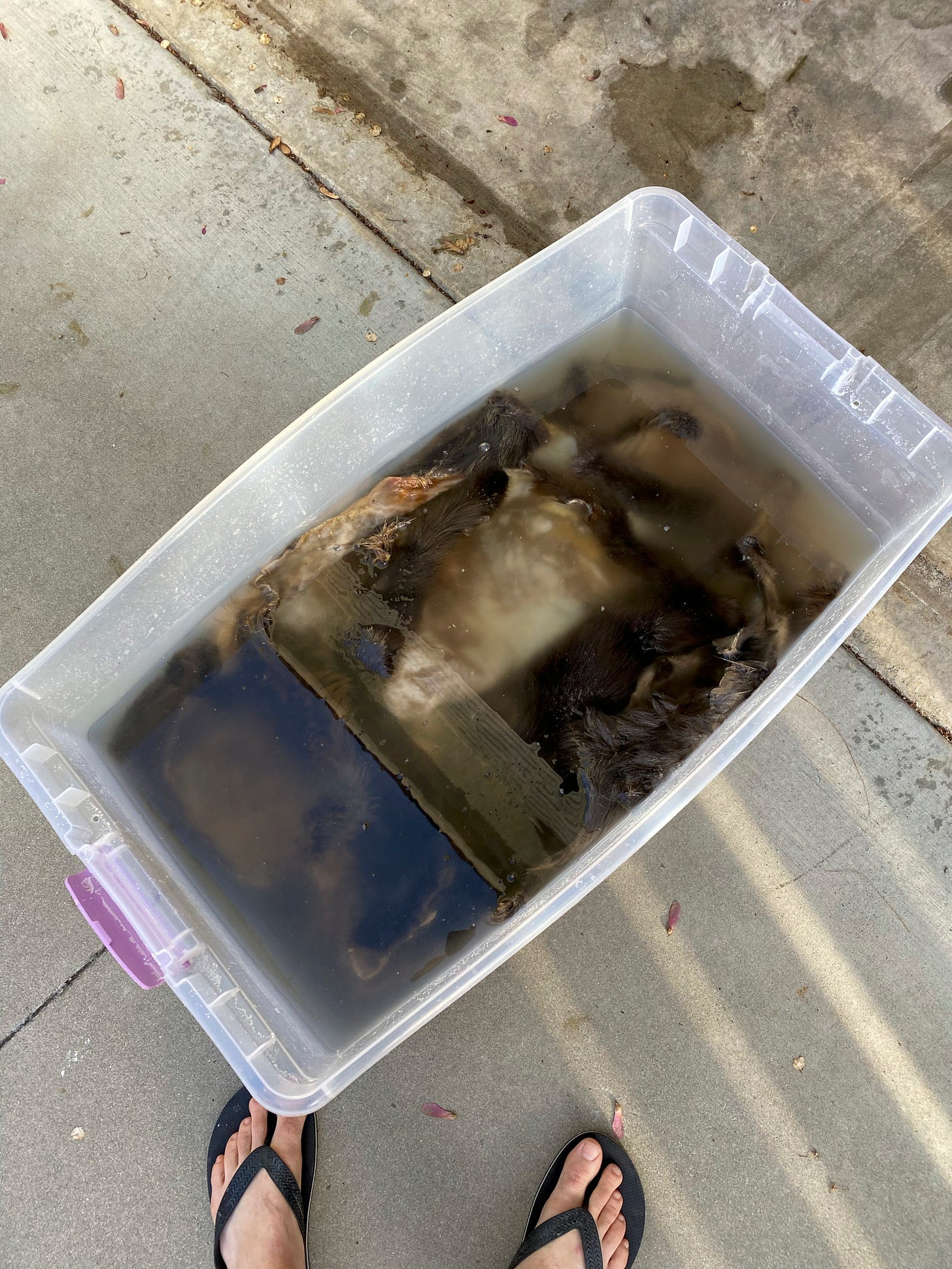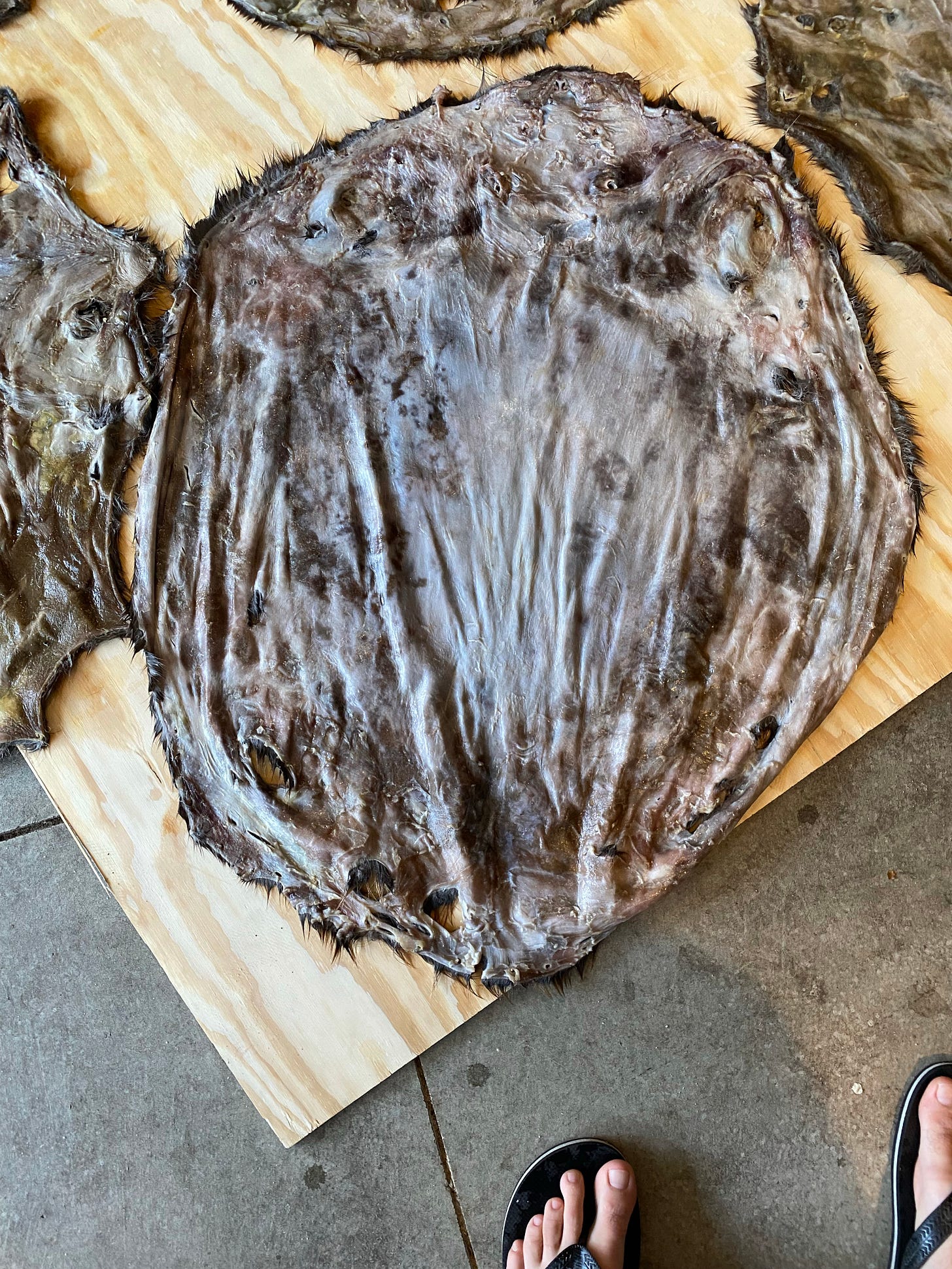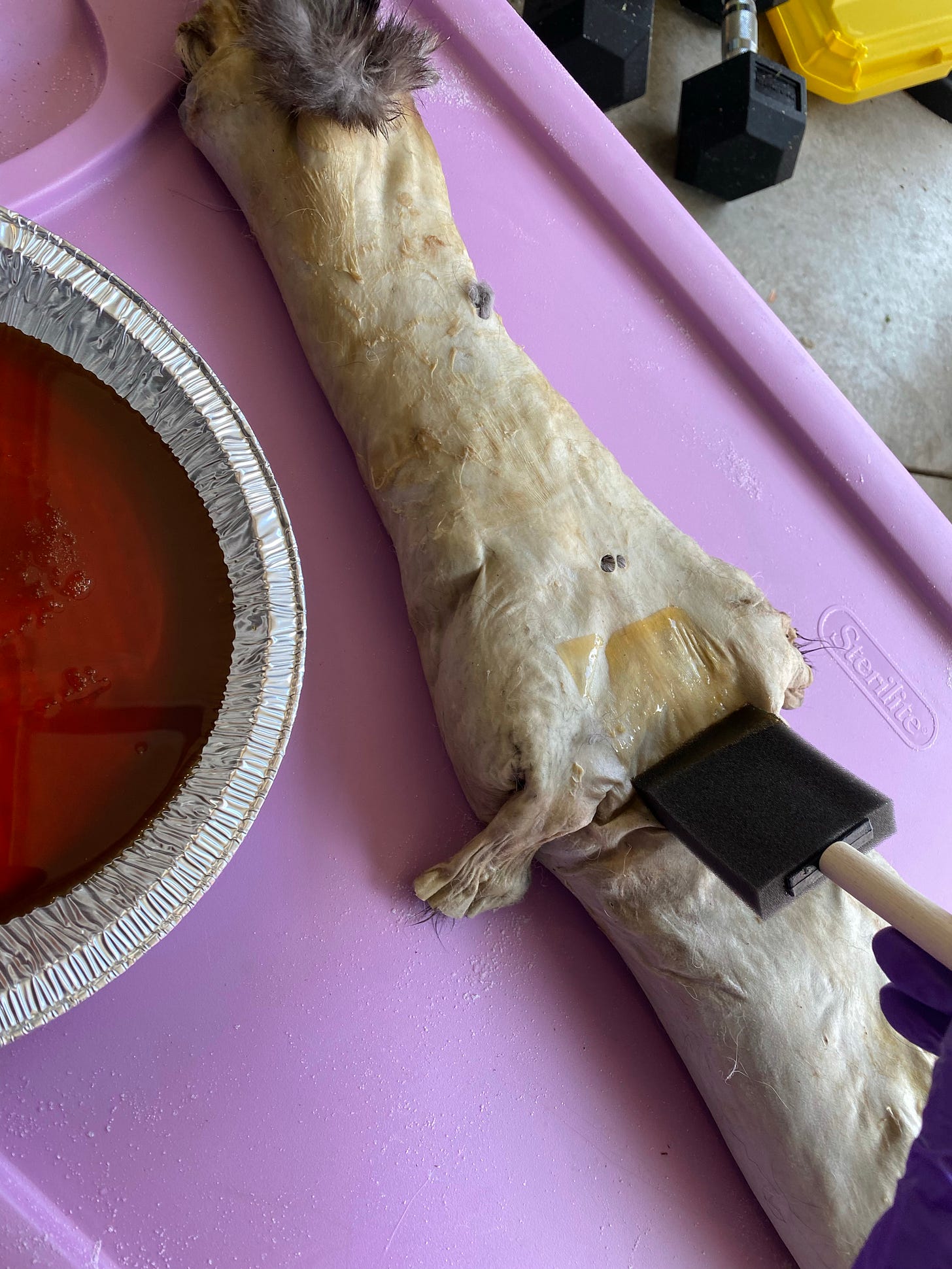Since my last post* I let all of the pelts salt for a total of forty-eight hours. At the twenty-four hour mark I scraped off the old salt and reapplied some fresh spice to ensure that enough moisture was being pulled out of pelt.
About five hours before hitting the forty-eight hour mark I began the process of making a room temperature salt bath. I filled my plastic bin with fifteen gallons of piping hot water (3 five-gallon buckets worth) and added 1/2 a pound of salt for every gallon of water... roughly 7.5 pounds. Once weighed out, I poured the salt into the hot water and stirred it like a cauldron to make sure all of the course salt was fully dissolved. Feeling like a witch in a fairy tale I mumbled a few words and set a curse for success on these pelts turning out well and then left to let the water cool down.
Once the water cooled off to room temperature (which took longer than I thought) I put all of my hides into the solution. I stirred them around a bit to ensure there was no trapped air and went to bed. At four am the next morning I went to my garage and fished around to pull out my foxes, as they need significantly less time in the solution than the beavers. I rinsed them off with clean water, rung them out, and hung them up to dry. Later that evening at the twenty-four hour mark, I did the same thing to the beavers... Pulled them out of the solution, rung them, washed them in clean water, rung them out again, and laid them out to dry.
The interesting piece of this process is that even if you think you had a very well fleshed pelt the salt bath will reveal tons of fat, tough skin, and other areas that you need to address before applying the tanning solution. For me personally, I saw that I had a lot of work to do... So, after letting the pelts semi-dry for about twenty four hours I got back to work removing any of the fat and tough skin.
To do this efficiently, I ended up using a dremel tool with a small wire wheel and 128-grit sandpaper attachment. This made quick work of removing the fat chunks without ripping the hide, but also created a storm of beaver and fox saw dust that got everywhere… I probably ingested one beavers worth of this dust and was coughing for a day. However, once all of my pelts were worked, I gave them all a final bath in a bucket of clean water and dish soap and hung them out for one last 24 hour drying session.
When the pelts became semi-dry once more it was time to apply the actual tanning solution. For this group of pelts I used a commercial product that needed to be warmed in a bucket of water before applying to the pelts. When the solution was warmed I put on some rubber gloves, laid out all of my hides skin-out, and then used a foam brush to apply the solution to every nook and cranny. For both the foxes and beavers I used my hands to work the solution as deep into the hide as possible before flipping the foxes fur-side-out to hang and then folded the beavers skin-on-skin to let the solution soak in.
The next day I went and flipped the foxes to be skin-side-out and opened the beavers to hang dry. The furs will dry over the next few days and once they became a bit stiff we will begin the last and final step of breaking the pelt to be turned into a nice soft leather for garment work.
*My previous post entitled “Unsellable” was deleted from LinkedIn for “inappropriate content” with no notification to me… However, after reaching out to the content moderation team (who were pretty awesome)they reinstated the post within two days.
